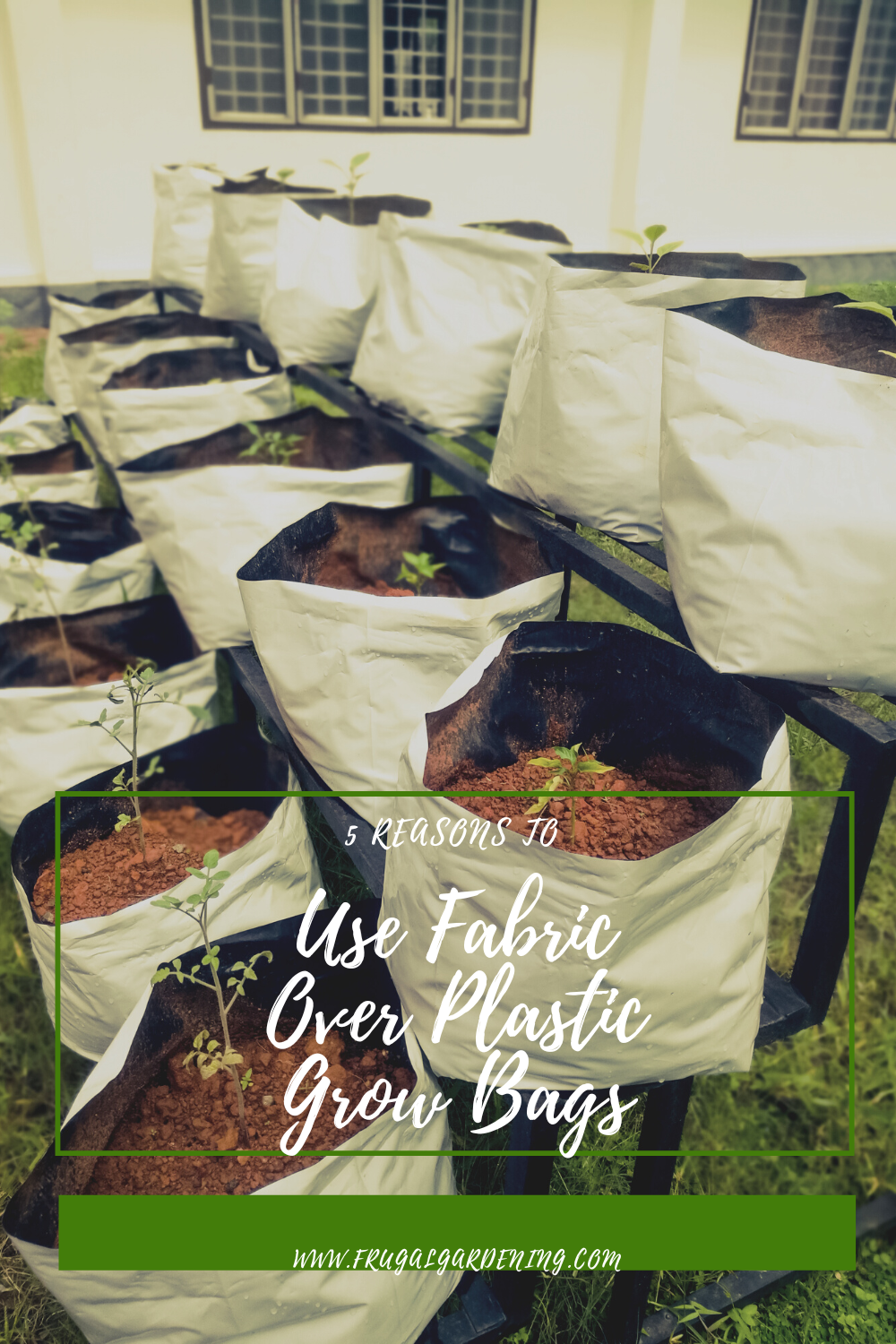
I love grow bags. They’re a great choice for gardeners with limited space, and you can bring them with you if you have to move. But should you use fabric over plastic grow bags? Which type of grow bag is the best option?
Plastic will work in a pinch, but the fabric is my favorite grow bag material.
I’m here to tell you that fabric is your best option when using grow bags. And here’s why:
They promote healthy root growth.
Unlike plastic ones, fabric grow bags are breathable. You can buy fabric grow bags here. The permeable fabric allows roots to breathe and encourages something called air pruning. Have you ever picked up a plastic plant container only to notice the roots are all mangled and twirled up? This is unlikely to occur with a fabric bag because exposure to air in effect prunes the roots.
And this pruning isn’t just good for preventing root-bound plants. It also makes roots healthier and better able to soak up water and nutrients.
They’re easy to transport.
Even when filled with dirt, fabric bags are easy to drag from one place to another. When empty, they’re easy to store, too. You can fold them up and store them in a tiny nook.
They prevent root rot.
Because the fabric is permeable, water easily drains out the bottom, which is not the case with plastic grow bags. Plants that sit in water for days on end can end up dying due to root rot. Over watering is a common mistake, especially with newbie gardeners. You spot an unhealthy-looking plant and assume it needs water, right? Except, often it’s too much water that’s the problem. With fabric grow bags, you’ll never overwater again.
They don’t overheat.
Plastic is a great material of choice for keeping heat-loving plants happy because it tends to soak up heat. But in the middle of the summer, when the weather gets too hot, plastic can help plants on their way to overheating. Fabric is less likely to cook your plants to death. It can even help keep the soil cool.
You can reuse them.
You probably think fabric pots aren’t reusable. Well, you’d be wrong! You can reuse most fabric pots for at least a few years. And they aren’t prone to cracking or UV damage like plastic.
What to plant in fabric bags
You can plant just about anything in fabric grow bags, but my absolutely favorite plant to grow in these containers is potato. Potatoes can take up a lot of room, and it can be tough to dig them out in a regular garden bed—raised or not. But when you grow them in a fabric bag, just dump out the soil at the end of the season and gently sift through the dirt to find those starchy treasures.
Ultimately, anything you can grow in your regular garden will grow in a fabric grow bag. Grow bags are great for patios and balconies. They’re also great when you’ve run out of room in your main garden beds and need a place to plant on short notice.

Steph Coelho is a freelance writer gardening in zone 5b. She is a certified Square Foot Gardener and has taught various garden-related workshops. When she’s not digging in the dirt or writing, she’s cooking up fresh produce, running, or listening to her favorite podcasts.
Hi! Where can I get a fabric (non plastic) liner to line a raised garden box?